Mexico‘s vibrant and endlessly fascinating capital city, Mexico City, or Ciudad de Mexico (CDMX) as it’s known by the locals, is a unique megalopolis with so much to offer. From mysterious Aztec ruins to colorful Spanish colonial buildings, world class museums, galleries and parks, plus incredible food and nightlife.
Mexico City was a place that surprised me. I hadn’t expected to like it. From the, somewhat negative, stereotypes I’d heard I thought it would be a place I’d want to get out of as soon as possible. And, while it was a bit of a culture shock at first, I felt pretty safe and actually grew to love this welcoming and diverse city.
I hope you will love it too, so I’ve written this blog with what I think is the best Mexico City itinerary to share all my tips so that you don’t miss out on anything.
This itinerary for Mexico City contains all the must sees – from historic sites and famous museums to exploring lovely tree lined neighborhoods dotted with art deco architecture, boutiques, cafes and parks. I’ve also got plenty of suggestions for unique cultural activities to try and day trips beyond the city to see more of Mexico.
Pin Me <3
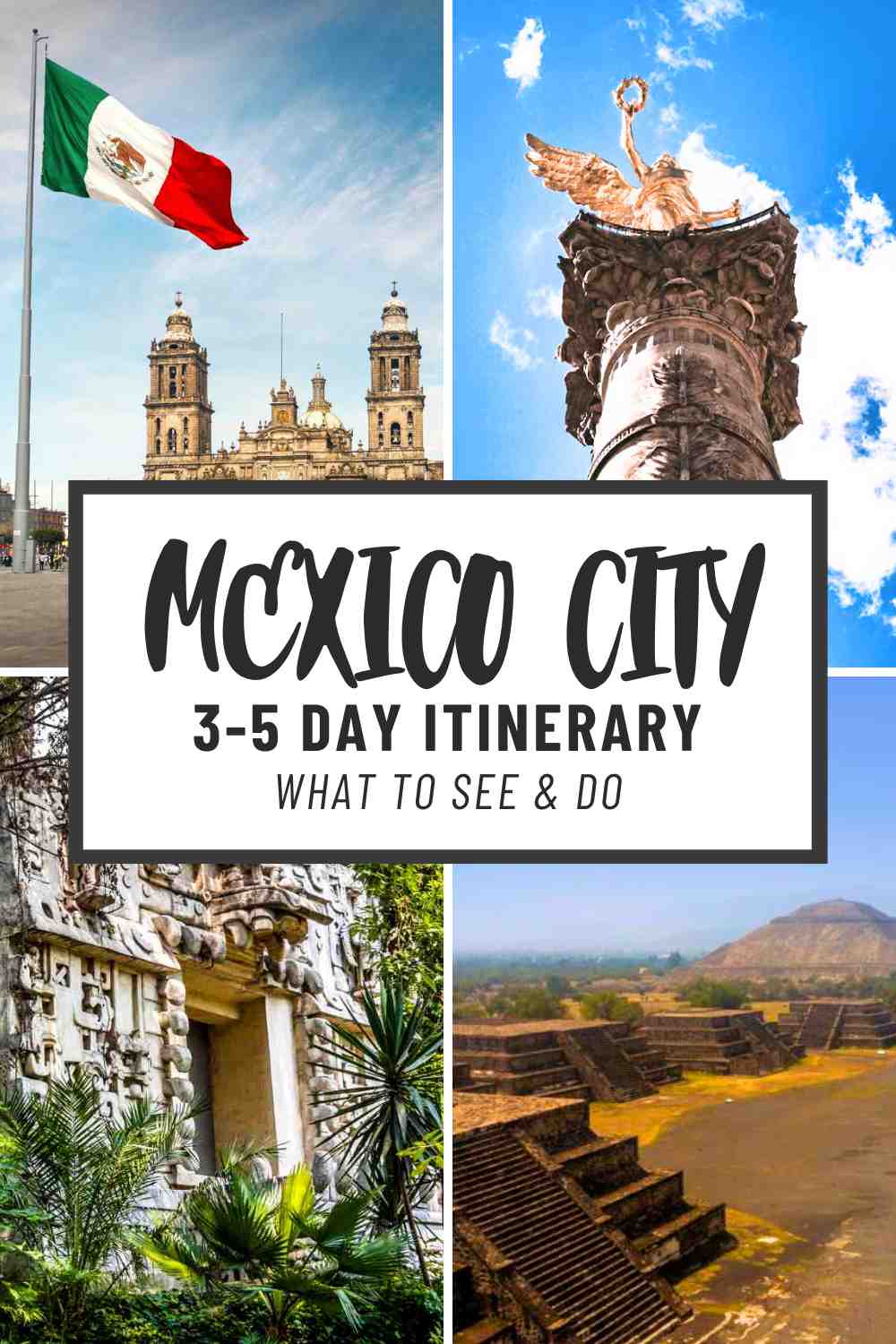
How Many Days to Spend in Mexico City
Mexico City is the biggest city in North America and there’s so many things to do here that you could spend a week or more here and not get bored, but I know not everyone has so much time to spend.
If you plan your itinerary for Mexico City well, you can see all the highlights and get a good feel for this fascinating and beautiful but often misunderstood city in just 3 – 5 days.
Here’s my suggestions, depending on how many days you have:
3 Days: If it’s your first time, I recommend spending at least 3 days in Mexico City. This will give you enough time to get a taste of the city (literally!), see all the top attractions like the Centro Historico, Chapultepec Park, the Anthropology Museum and the Frida Kahlo Museum, and explore the city’s most charming neighbourhoods.
4 Days: If you also want to see beyond the city then I highly recommending spending 4 days in Mexico City. Then you’ll be able to explore the city as well as visiting the mighty and mysterious Pyramids of Teotihuacan.
5 Days: If you have more time, or prefer to explore at a more leisurely pace, why not spend 5 days in Mexico City. You could enjoy exploring the different neighbourhoods at a slower pace, find some hidden gems, linger longer in parks, museums and cafes, join a Mexican cooking class or take a day trip to some of the other interesting places nearby.
My Mexico City Itinerary
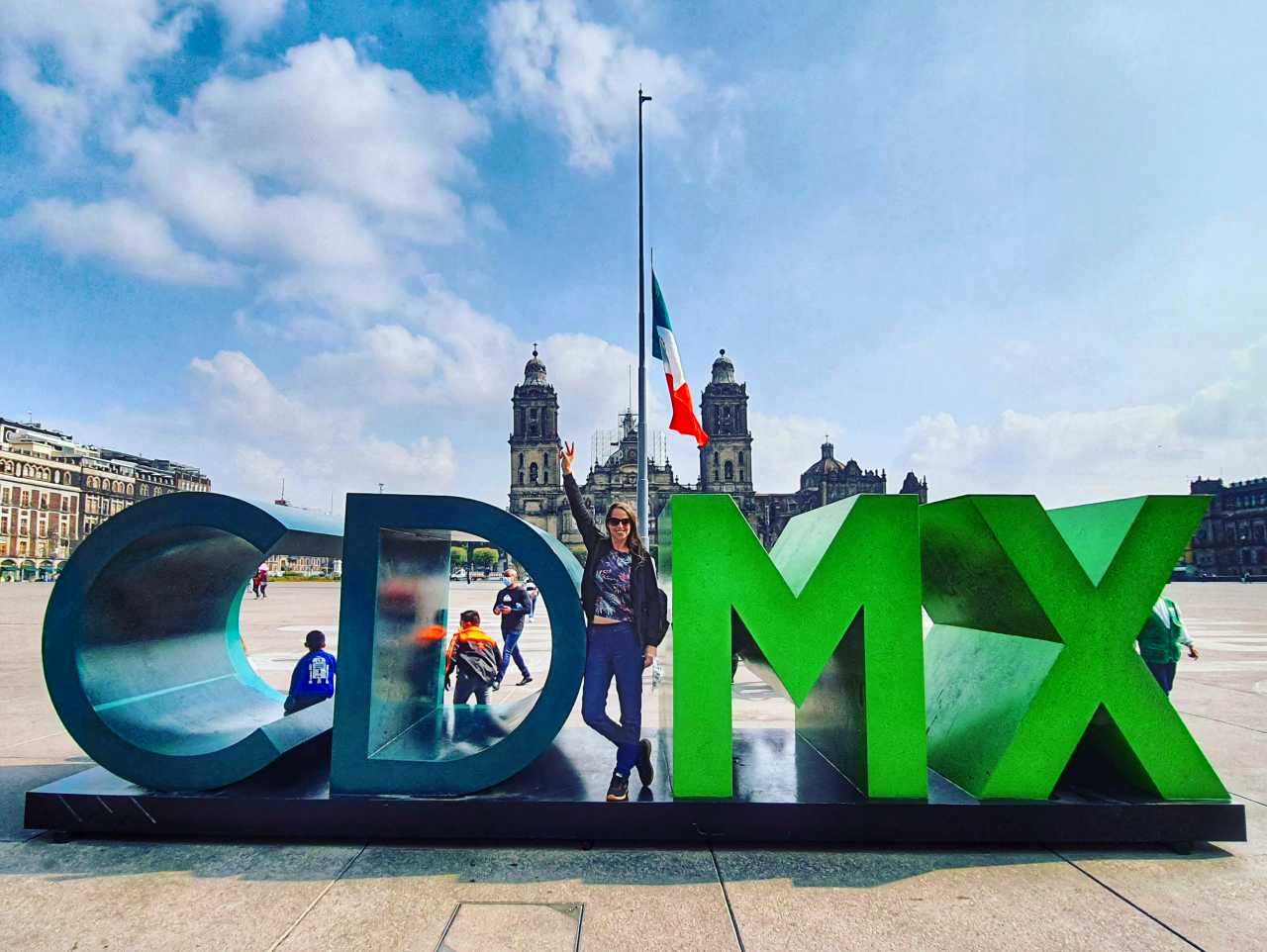
Without further ado, here’s my itinerary for Mexico City. This is how I recommend spending 3 to 5 days in Mexico City, especially its your first time. You can adjust this itinerary depending on how much time you have and your interests.
The first three days of this Mexico City itinerary will cover all the must sees and dos in the city itself. On day 4 I’ll suggest an unmissable day trip, and on day 5 I’ll suggest some unique local activities and other places to visit near Mexico City to choose from to round off your trip.
A mini Mexico City Travel Guide with all the information you need to help you plan your visit to Mexico City can be found after the itinerary.
Day 1: Explore the Centro Historico (the Historic Center)

The best way to start your Mexico City itinerary is to explore the Centro Historico. This is the historic center and the oldest part of the city which is now a UNESCO world heritage site.
This area was built on the ruins of the Aztec capital Tenochtitlán which was an island in what was then Lake Texcoco. Nowadays the Centro Historico is full of colourful Spanish colonial architecture, grand plazas, and historical museums but you can still see some of the ruins of the first city.
As with any big city, I thoroughly recommend starting your exploration by joining a walking tour, and this is what I suggest you do on your first day in Mexico City. I took this Centro Historico Walking Tour with an expert local guide that visited some of Mexico City’s most important monuments and points of interest. It was a great way to get my bearings and learn about Mexico City’s fascinating history and culture without worrying about getting lost or wandering into a not so safe neighborhood.
Alternatively, if you’re a foodie, you might prefer this Mexico City Food Tour where you will discover the best eateries and learn about the city’s culture and history through your tastebuds!
Our starting point, The Zócalo, also known as the Plaza de la Constitución, is the main square in the city center. It’s often referred to as ‘the heart of Mexico’ and there’s always something going on in the plaza. You might even see colourfully dressed Aztec warriors and shamans performing ceremonies and posing for photos with passing tourists.
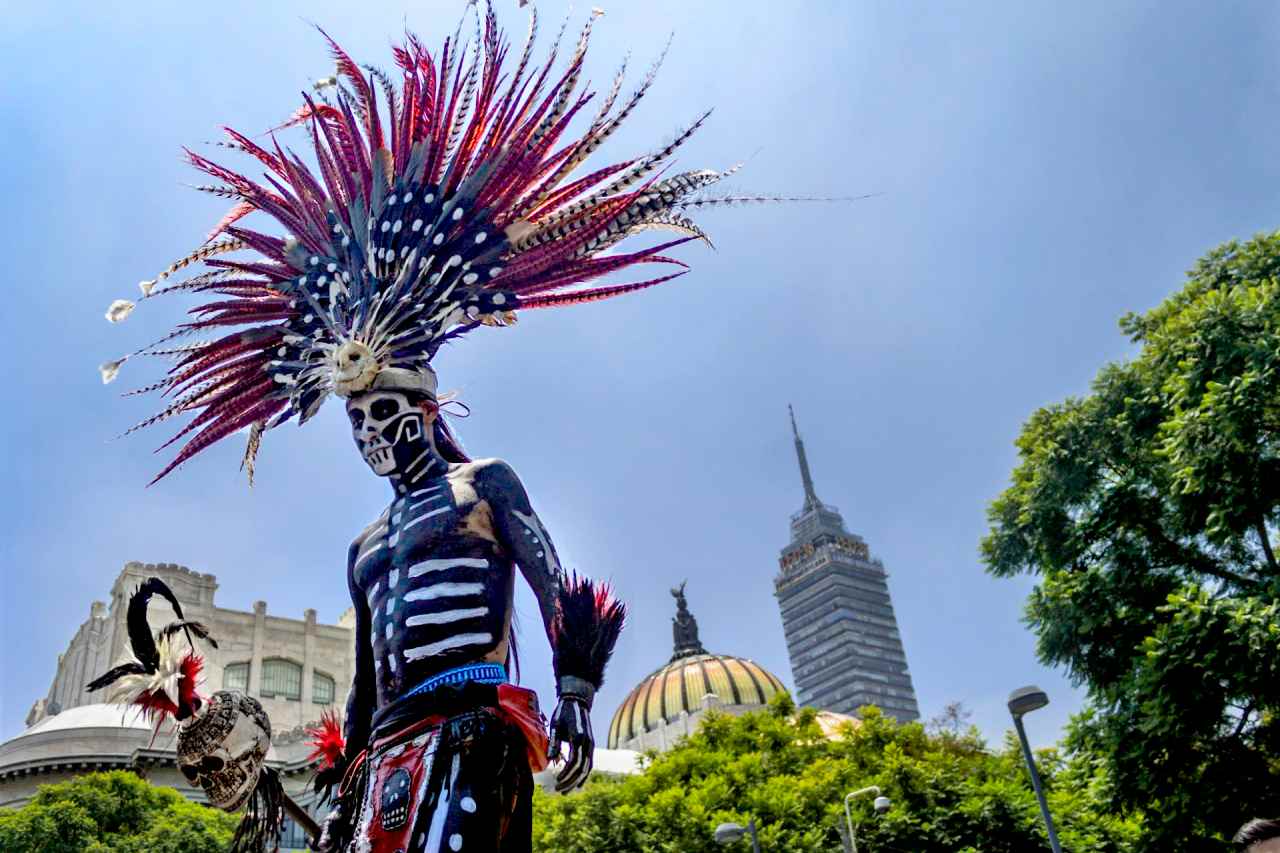
The plaza is surrounded by impressive historical buildings and landmarks like the Metropolitan Cathedral and the Palacio Nacional (National Palace.)
The Metropolitan Cathedral was built on top of an ancient Aztec temple over a period of almost 250 years, and it has been the biggest church in the Americas since it’s completion in 1813. The adjacent National Palace is home to the offices of the Mexican president, several museums and Diego Rivera‘s famous mural “The History of Mexico.”
Other interesting places to see include the Aztec ruins of Tenochititlan at Templo Mayor, where the first ancient city was founded, the Palacio Postal, the most glamorous post office I’ve ever seen, and the Palacio de Bellas Artes (Palace of Fine Arts) – a mesmerizing art nouveau cultural centre that still hosts a wide variety of exhibitions and performances. Even if there’s not an event happening when you visit it’s still worth checking out the incredible murals inside.
After the tour, I suggest having lunch at the beautiful (and very Instagrammable) Casa de los Azulejos (The House of Tiles.) The Casa de los Azulejos is an 18th century Baroque palace covered with blue and white tiles which is now a popular restaurant serving traditional Mexican dishes.

After lunch head up the nearby Torre Latino Americana for amazing 360° panoramic views over the city from the observation deck. It’s one of the best ways to appreciate the sheer size of Mexico City and it’s surroundings and there’s also a cocktail bar up there.
Continue exploring the city center in the afternoon. Take a stroll through Alameda Central, Mexico City’s oldest public park and check out the Museo Mural Diego Rivera (Diego Rivera Mural Museum.) Make sure you don’t miss its largest mural (at 15 meters long!) the ‘Sunday Afternoon’ scene by Diego Rivera, a famous Mexican artist and nationalist.
If you feel like wandering a bit further, you could also check out the Monumento a la Revolución (Monument to the Revolution) – a famous landmark monument in a huge plaza dedicated to the Mexican Revolution with a museum and observation deck.
In the evening, take an Uber over to Plaza Garibaldi. It’s a lively city square where Mariachis in traditional attire perform surrounded by bars, restaurants and shops. You can enjoy tacos and margaritas at Salon Tenampa, a historic cantina by the square, while listening to live Mariachi music and soaking up the unique vibes – the perfect way to round off day 1 in Mexico City.
Day 2: Chapultepec Park, Museums and Galleries
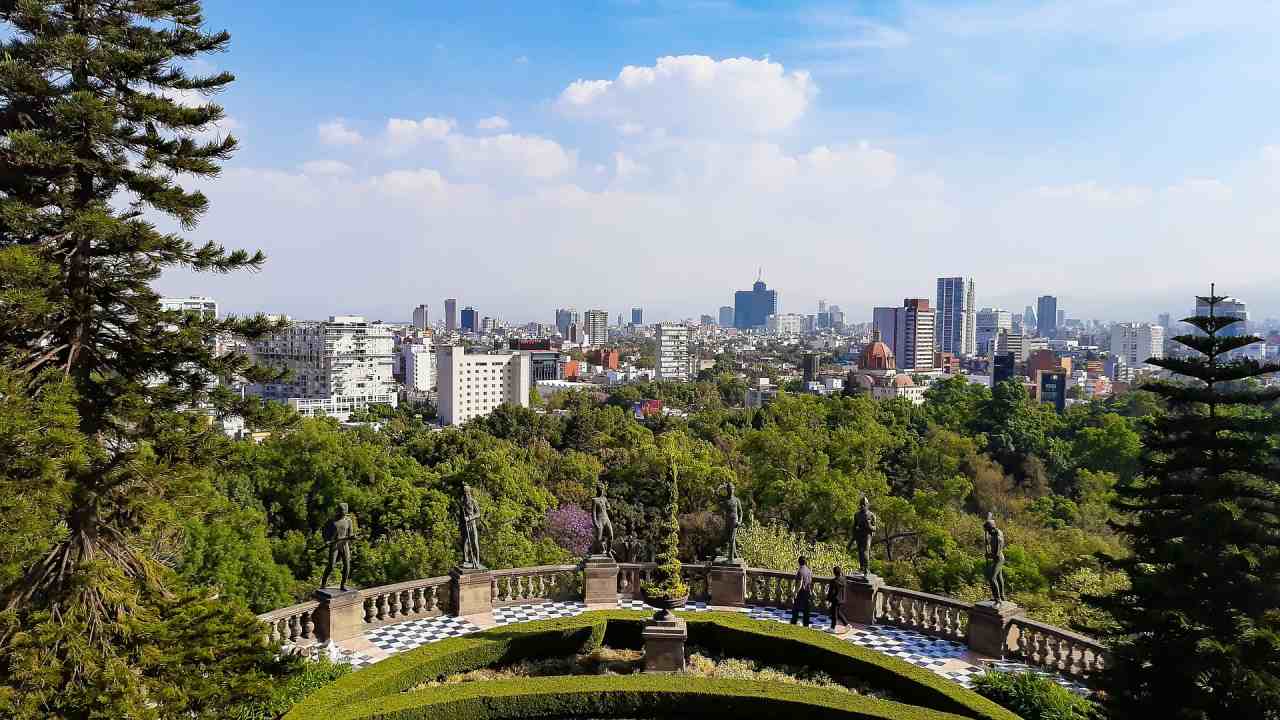
Did you know that Mexico City rivals London as the city with the highest concentration of museums in the world? There’s over 150 museums, galleries and cultural institutions here! Don’t worry I’m not going to suggest you see all of them – but how does a stroll round the park combined with visiting some of Mexico’s top museums sound?
I recommend spending your second day in Mexico City exploring the gardens and world class museums and galleries in Bosque de Chapultepec (Chapultepec Park.) It’s one of the largest city parks in the world, more than twice the size of New York’s Central Park, and there’s so much to see and do!
Head first to the Museo Nacional de Antropología (National Museum of Anthropology). This famous anthropology museum houses the famous Aztec Sun Stone, the giant Olmec heads and priceless Mayan artifacts and offers an essential insight into Mexican history.
The National Museum of Anthropology is one of the most important museums in the whole of Latin America, and one of the most popular attractions in Mexico City. So it’s worth getting your tickets in advance so that you can skip the queue – you can get tickets here. You might also want to consider booking a guided tour of the museum to make it easier to understand and less overwhelming.

Have lunch at Sala Gastronómica just outside the anthropology museum, they serve a wide variety of excellent dishes from all over Mexico in a lovely relaxed setting in the park. You can sit outside on the pretty patio if the weather is nice.
After lunch, explore some of the park’s other museums and attractions. If you’re into art then you might want to check out the Museo de Arte Moderno (Museum of Modern Art) and the Museo Tamayo (Tamayo Museum) for modern and contemporary Mexican art.
which houses contemporary Mexican art with works by Frida Kahlo, Diego Rivera, and Remedios Varo, and Museo Tamayo (Tamayo Museum) for modern and contemporary Mexican art.
If you’d rather enjoy the gardens you can rent a pedal boat on Lago de Chapultepec (Chapultepec Lake) or visit the theme park, the zoo, or the botanical gardens.
Another must see is the Museo Nacional de Historia Castillo de Chapultepec (Chapultepec Castle) – a former royal castle (the only one in North America). Chapultepec Castle is home to the National Museum of History, which has some fascinating exhibits on Mexico’s colonial period and independence movement, and offers incredible views of the park and city beyond.
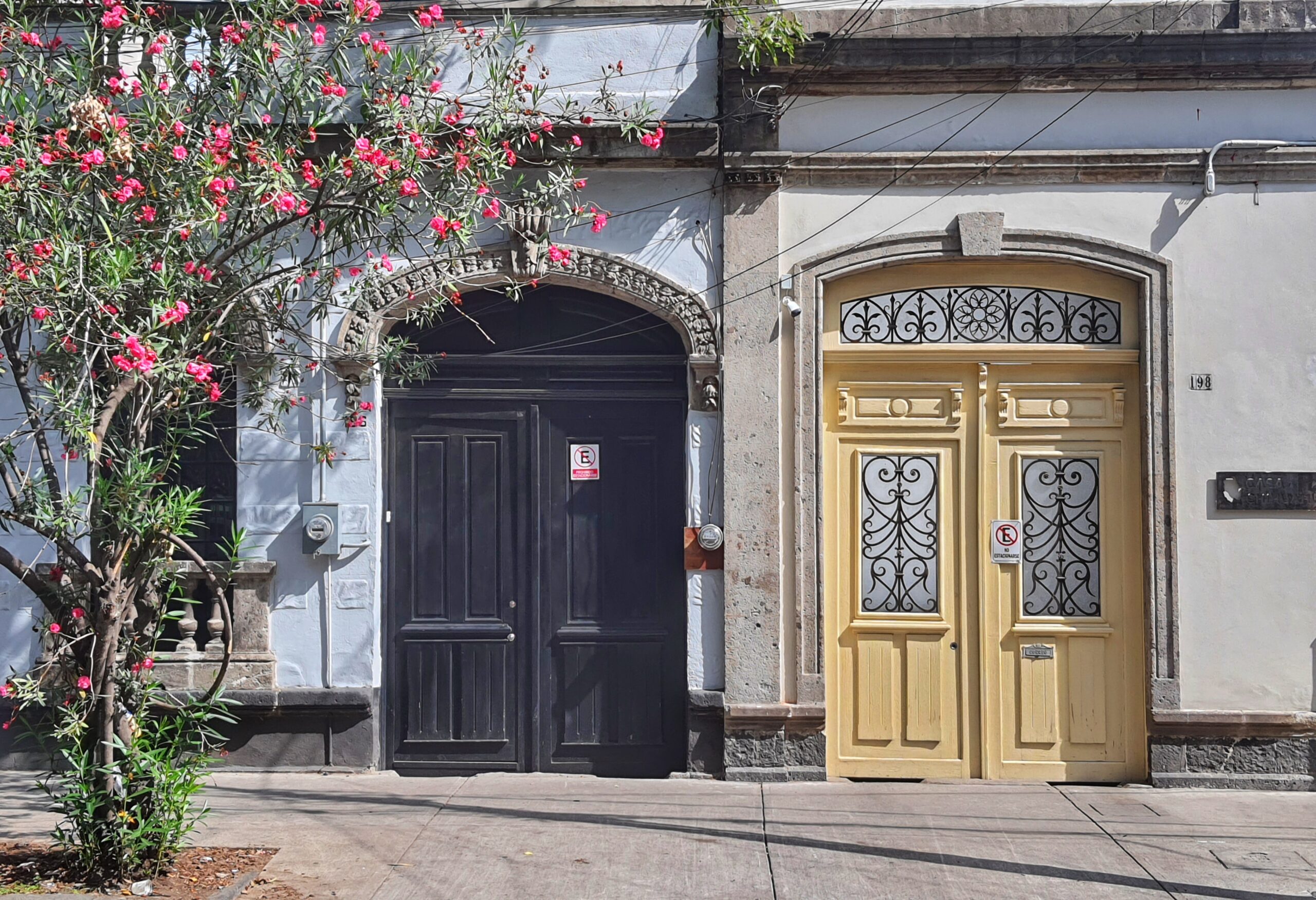
Depending on how long you spend in the museums and the park, the afternoon or early evening, head to the affluent neighbourhoods of La Condesa and Roma next to Chapultepec park.
These leafy, upscale neighbourhoods are well worth exploring for the colorful art deco architecture, boutique shops and art galleries showcasing works by both Mexican and international artists that are hidden amongst the tree lined streets.
This is my favorite part of Mexico City, I really liked relaxing and people watching in Parque Mexico and walking around the Hipódromo area. And, when hunger strikes, there’s also plenty of excellent cafes, bars and restaurants in these areas
While there are plenty of luxury restaurants in Mexico City, I think one of the best ways to explore a city is through it’s street food. One of the best places to try is Mercado Roma – a modern food court bursting with unique dishes to try at affordable prices.
Another great way to spend the evening in Mexico City is joining a tacos and mezcal crawl. This is such a fun way to learn about Mexico City’s food, culture, and traditions while trying some of the best food and drinks around the trendy Roma area.
Then, if you want to carry on the night afterward, check out the bars and night clubs in Zona Rosa nearby.
Alternatively, if you would prefer dining in a restaurant, try dinner at Michelin starred Quintonil in Polanco, which serves modern Mexican cuisine, or go for something more casual at Contramar in Roma, a seafood restaurant famous for its tuna tostadas and fresh ceviche.
Or, if you prefer to do the cooking yourself and learn how to make your favorite Mexican dishes back home then you could also use this evening to take a Mexican cooking class.
Day 3 : Frida Kahlo Museum, Coyoacán and Xochimilco
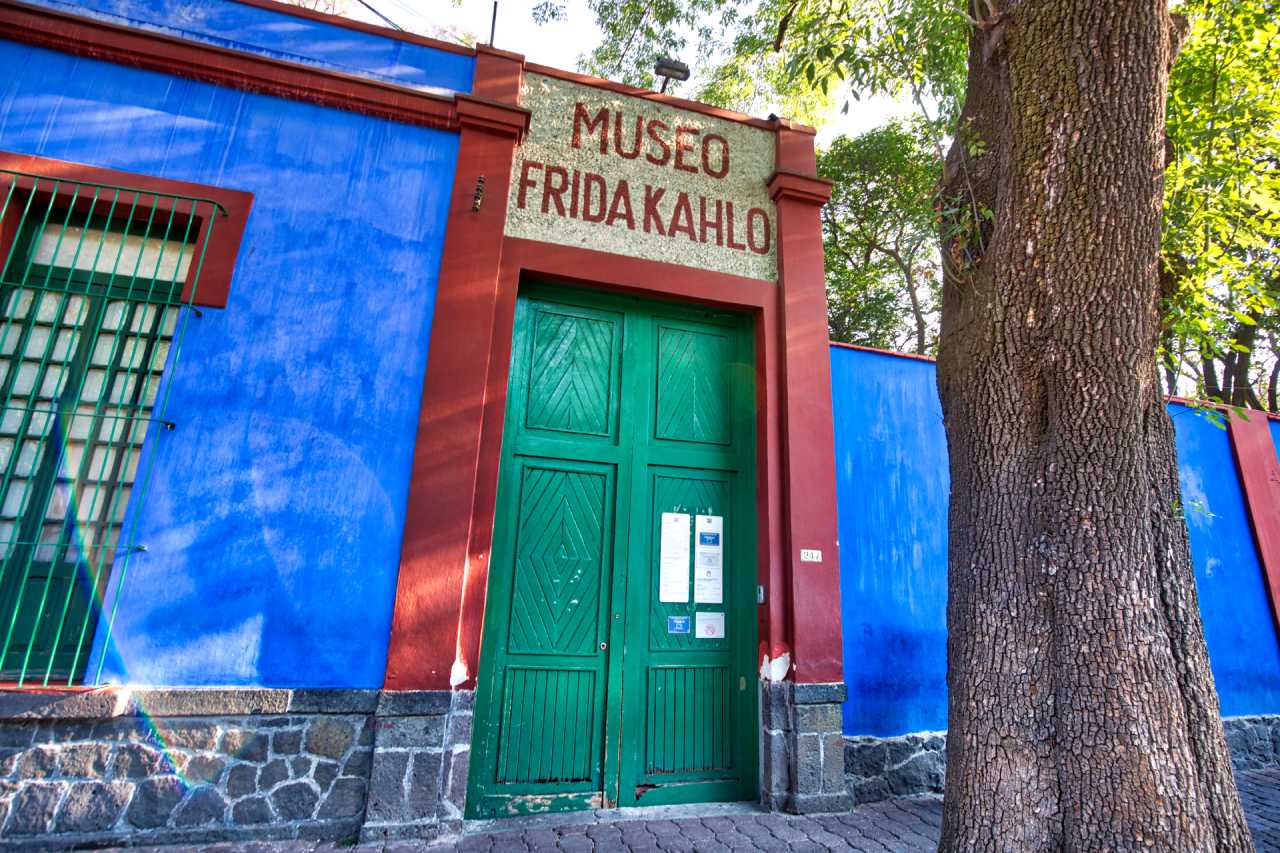
On your third day in Mexico City head a little outside the city center to Coyoacán, one of the most atmospheric parts of the city and where you’ll find Frida Kahlo’s House and Museum.
The Museo Frida Kahlo (Frida Kahlo Museum,) also known as Casa Azul (the Blue House), is must visit – it was Frida Kahlo’s childhood home and later the residence she shared with Diego Rivera.
Casa Azul contains a small, but well presented, collection of personal belongings, artwork, photographs and documents that give you an intimate glimpse into the life and struggles of Mexico’s most famous artist. It’s beautiful, inspiring and quite moving.
Be aware that the Frida Kahlo Museum is closed on Mondays and, as it’s very small and one of the most popular attractions in Mexico City, you need to get your timed ticket a few days in advance at least.
You could also join this Coyoacan and Frida Kahlo Tour where you’ll discover the neighbourhood of Coyoacan on a small group cycling tour, stopping for churros and tostadas at the market, before getting a VIP tour of the Frida Kahlo Museum.

The lovely, leafy Coyoacán neighbourhood is a delight to explore. The main square, Plaza Hidalgo, is surrounded by cafes, restaurants and beautiful historic buildings, including San Juan Bautista Church, one of the oldest in Mexico City, while the neighbouring Plaza Coyoacán is where you’ll find the Fuente de los Coyotes (Coyotes Fountain.)
Either have lunch in one of the restaurants that surround the park, like Michelin starred Los Danzantes, or head to the Mercado de Coyoacán (Coyoacan Market) nearby. This traditional local market dates back to 1921 and is a great place to try delicious street food like tostadas, churros, and esquites (Mexican street corn).
You can also visit Leon Trotsky’s House Museum in the same neighbourhood – the famous Russian revolutionary and Frida Kahlo were friends.
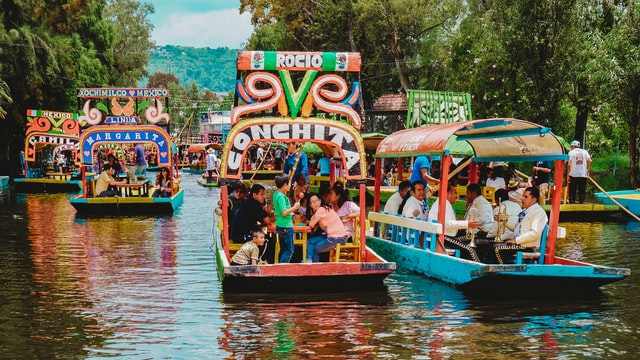
In the afternoon, head further south to the edges of the the city to see the canals and floating gardens of Xochimilco, a UNESCO-listed site with colorful trajineras (traditional boats). Taking a ride on these colorful boats along the waterways, accompanied by lively music and drinks, is the best way to experience this unique part of Mexico City.
To see both places in one day the easiest and safest way to do is with this private Coyoacan and Xochimilco guided tour. If you’re on a budget, you can also take this cheaper group tour or use public transport.
If you’re looking for a unique Mexico City experience for the evening, why not try the Lucha Libra Experience. This is where friendly local guides take you for tacos, beers and mezcal in a traditional cantina before introducing you to the world of Lucha Libra (Mexican freestyle wrestling) and accompanying you to watch a professional Mexican wrestling match at Arena Mexico.
Day 4: Visit the Pyramids of Teotihuacan

Now you’ve seen the highlights of modern Mexico City, it’s time to get out and see one of the most famous, impressive, and mysterious monuments in Mexico – The UNESCO world heritage site of Teotihuacán, an ancient city famous for its massive pyramids.
The sprawling site of Teotihuacán is definitely one of the must visit places in Mexico and, as it’s located only about 1 hour outside the capital, is an easy day trip from Mexico City.
As you walk down the Avenue of the Dead, the main thoroughfare, you can’t miss the massive pyramids. The Pyramid of the Sun is the largest pyramid but the Pyramid of the Moon is equally as impressive. You can even climb the pyramids for incredible views over the complex.
Also don’t miss the ancient ruins of the Palace of Quetzalpapalotl and the Temple of Quetzalcoatl (the feathered serpent) which gives you an important insight into the ancient culture that built these enormous structures.
The origins and founders of this awe-inspiring settlement are still a bit of a mystery. It is widely believed to have been rediscovered by the ancient Aztecs and so may have been built by an even earlier civilization.
If you’re interested in history then I recommend taking a private guided tour of Teotihuacan where an expert local guide will bring the site to life and show you many of the hidden clues to its mysterious origin. If you’re on a budget, this half day Teotihuacan group tour is great value.
After exploring ancient Teotihuacan, eat at La Gruta, a atmospheric cave restaurant next to the ruins.
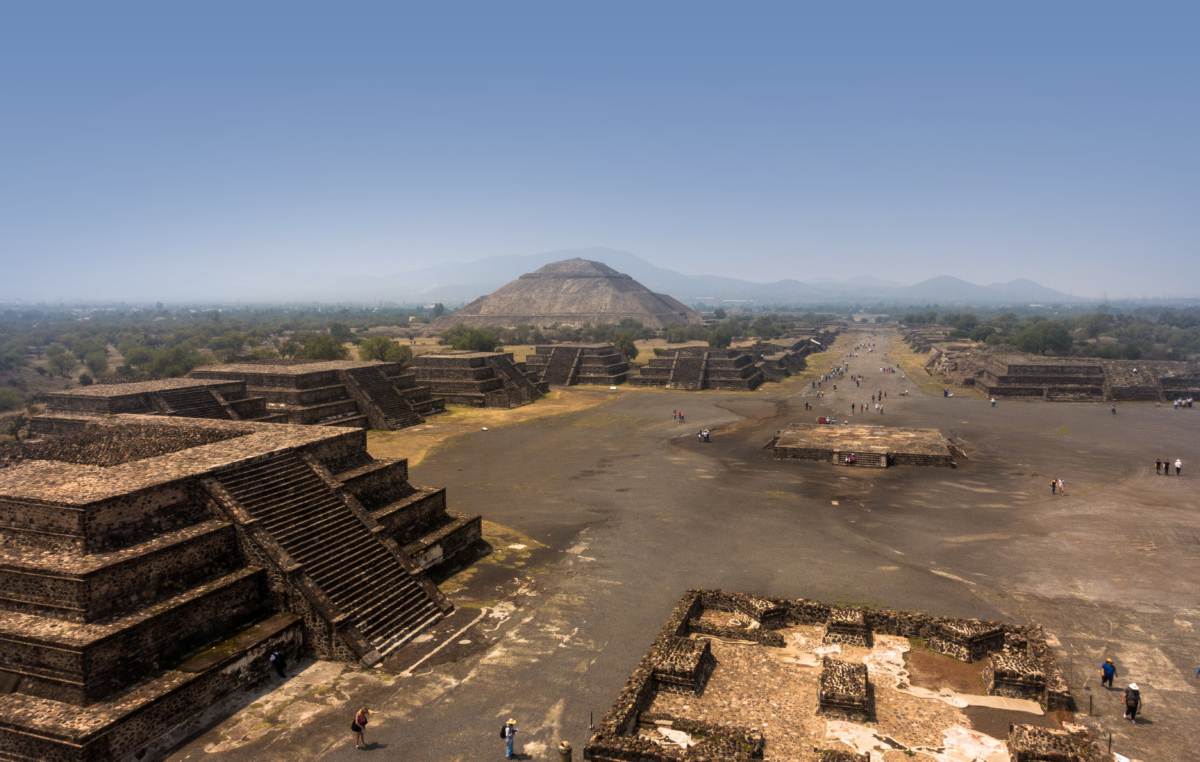
To make your visit here even more unforgettable, or to celebrate a special occasion, you can even take a magnificent sunrise hot air balloon flight over Teotihuacan. And, as a bonus, you also get to have breakfast in a cave and to avoid the crowds by gaining early access to climb the pyramids after the hot air balloon ride ends.
If you want to make the most of your day you could also visit some other interesting places near Mexico City like Tlatelolco – the largest archaeological site in Mexico City, and the Basilica of Our Lady of Guadalupe – one of the most popular Catholic pilgrimage sites in the world. This popular full day group tour visits Teotihuacán, Tlatelolco, the Basilica of Our Lady of Guadalupe and includes some tequila tasting too!
Day 5: More Things To Do In Mexico City
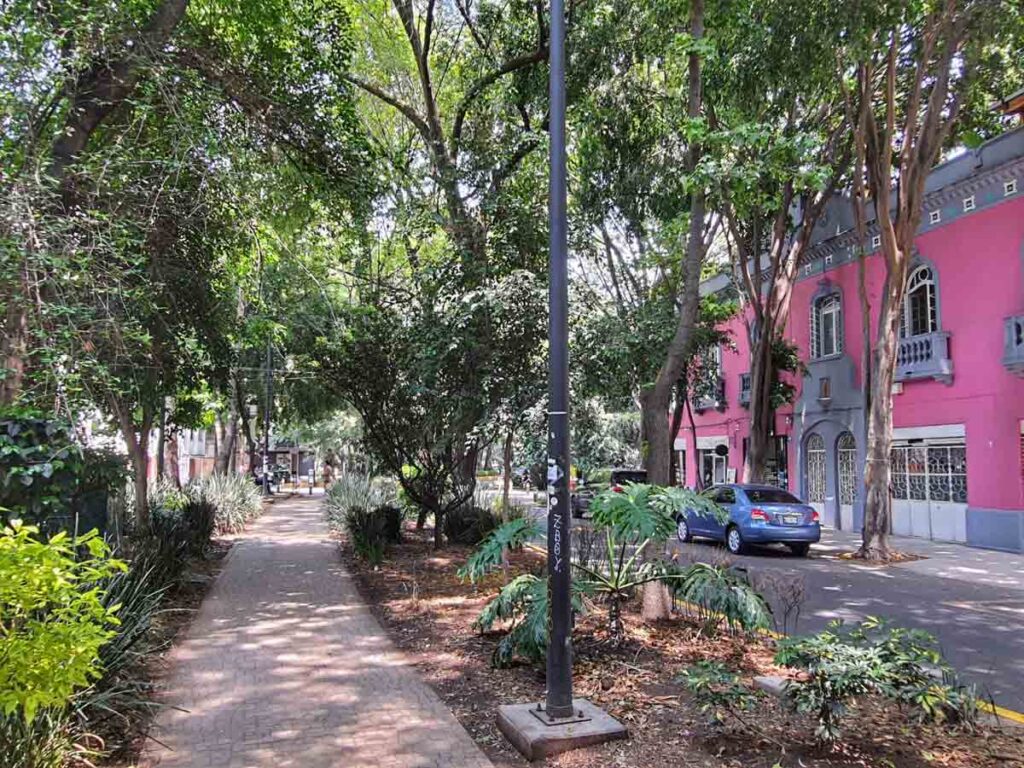
If you have enough time to spend 5 days in Mexico City you can use your final day as a wild card. Choose whether you want to revisit a favorite spot, explore more of the city, do some shopping, dive into local culture, or take another day trip out of the city. Here’s my top suggestions for you to pick from:
More of what you love:
More exploring – If you didn’t get enough time on day two, you could continue exploring the neighbourhoods of Polanco, La Condesa and Roma. There’s many unique shops in the area to pick up some momentos, arty street cafes to sit in and watch the world go by, and lovely parks to relax in.
More food – If you haven’t had chance yet, take a Mexican cooking class before you leave. My pick would be this Authentic Mexican Cooking Class that includes a trip to the local market to pick up fresh ingredients for your dishes. If you prefer to focus on the eating and let someone else do the cooking how about a Mexico City Food Tour of the Centro Historico where you will be taken to the best foodie spots and learn about the city’s culture and history through your tastebuds!
More tequila – Visit the Tequila and Mezcal Museum in Garibaldi, close where you saw the mariachi music on day one of your itinerary. If you book a guided tour, you’ll get tastings and learn to taste the difference between tequila and mezcal.

Local culture experiences:
Street Art – Ride the cable car high above the east side of the city as part of a new Street Art Tour that also includes a stop at the Museum of the New Fire.
Gallery Art – Visit the Soumaya Modern Art Museum in Polanco to admire thousands of works from the European old masters through to celebrated modern Mexican artists. As the museum is spread over 6 floors take a guided tour to avoid overwhelm and see the most significant pieces.
Traditional Dance – The combination of traditional costume and folk dance makes watching a ballet performance at the Palacio de Bellas Artes a colorful and uplifting way to enjoy your final day in Mexico City.
Day Trips from Mexico City
The capital also makes a great base from which to explore more of Mexico. There’s several beautiful and interesting places to visit near Mexico City so another option for your last day is to take another day trip. Assuming that you’ve already visited Teotihuacan, here’s three more day trips from Mexico City that are worth considering.
Puebla and Cholula

Puebla is a colonial city famous for its colorful architecture, Talavera pottery, and mole poblano. You can visit the stunning Puebla Cathedral, the Biblioteca Palafoxiana (one of the oldest libraries in the Americas), and the charming Callejón de los Sapos for antiques and handicrafts.
Just outside Puebla, Cholula is home to the Great Pyramid of Cholula, the largest pyramid (by volume) in the world, with a church built on top. The views of Popocatépetl Volcano from here can be spectacular!
How to get there: Take an ADO bus from Mexico City to Puebla (about 2 hours), then a short taxi or collectivo to Cholula. You can also book a full day trip to Puebla and Cholula which includes transportation from Mexico City and guided tours of both cities.
Tepoztlán

If you love nature and mystical vibes, consider checking out Tepoztlán. This Pueblo Mágico (Magical Town) is believed to be the birthplace of Quetzalcóatl, the feathered serpent god.
The highlight is the hike up to Tepozteco Pyramid, which offers panoramic views over the valley. After the hike, explore the town’s market for local crafts and try itacates (thick corn tortillas stuffed with cheese or meat).
Tepoztlán is also known for its spiritual retreats, temazcal (sweat lodges), and holistic healing centers, making it a great place to relax or join a retreat if you have more time on your Mexico trip.
How to get there: Buses leave from Terminal Taxqueña in Mexico City, and take about 1.5 hours.
Taxco
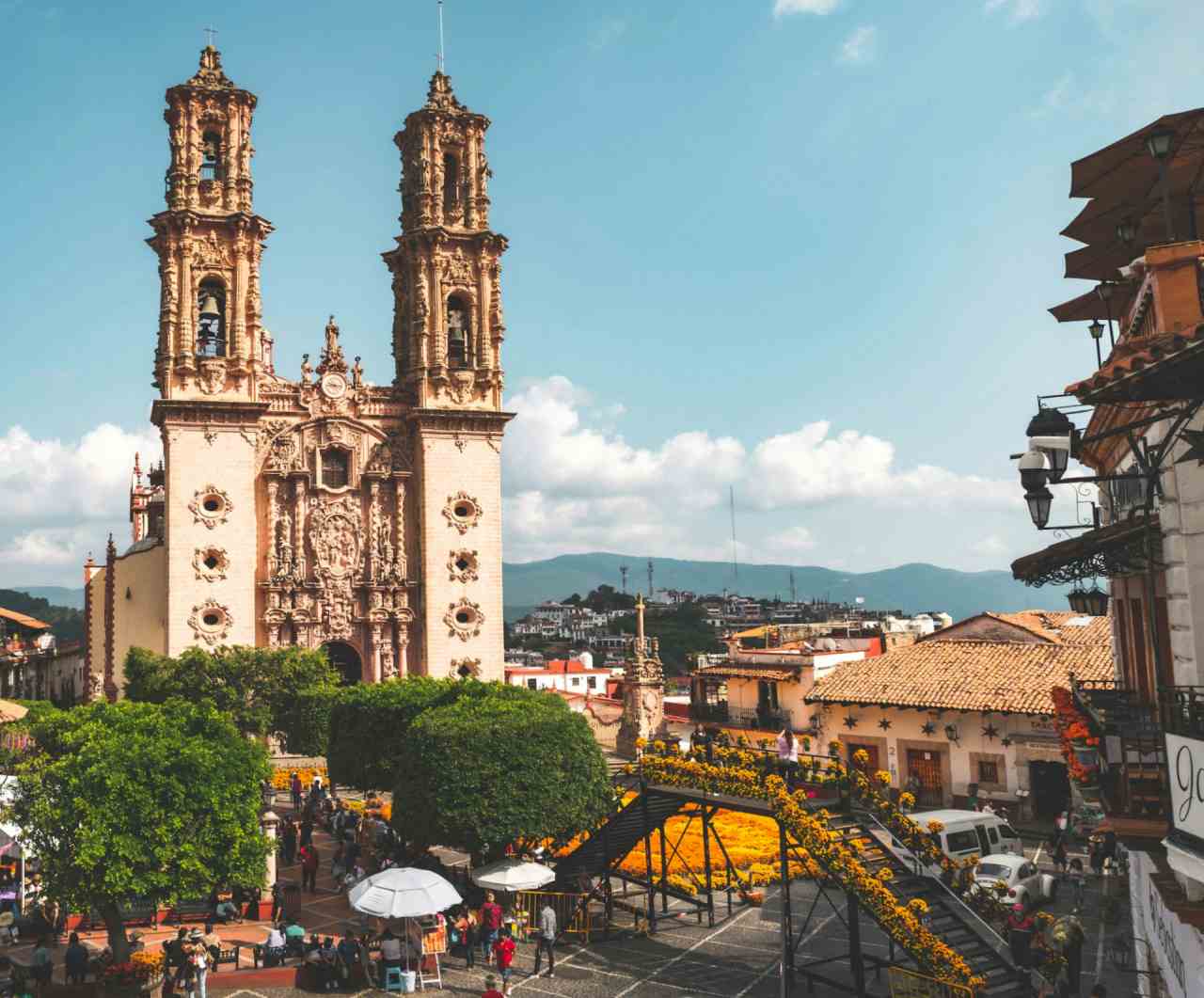
Taxco is a picturesque colonial town built on a hillside, famous for its silver jewellery and baroque architecture. The town is very scenic, with whitewashed buildings, winding cobblestone streets, and the stunning Santa Prisca Church at its center. You can go down into the ancient silver mine, visit silver workshops, explore the Cacahuamilpa Caves, or take a cable car for incredible views.
How to get there: Buses from Mexico City’s Terminal Taxqueña take around 2.5 to 3 hours. You can also join a day trip to Taxco which includes transport from Mexico City and guided tours into the ancient silver mine and around the historic city.
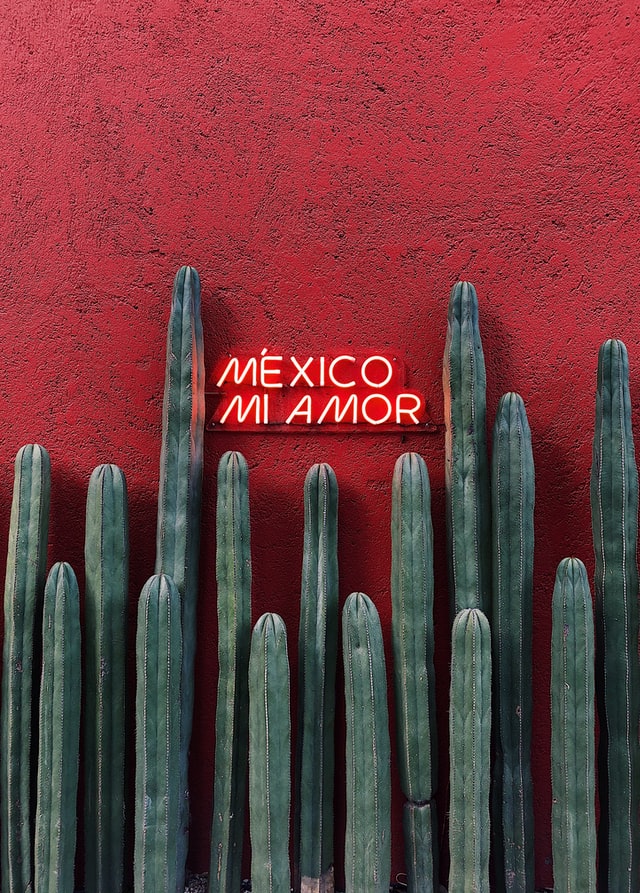
Mexico City Travel Guide
Before you plan your own itinerary for Mexico City you should consider the best time to visit, how to get there and get around, and where to stay and eat, so I’ll cover all this first in this mini Mexico City travel guide.
Where to stay in Mexico City
There are plenty of hotels in Mexico City to suit all tastes and budgets, however it’s really important to choose the right area to stay in to have a safe and enjoyable experience. Mexico City can be a very pleasant and safe place to visit if you stick to the safe neighbourhoods.
The safest and best areas in Mexico City include Reforma – a central upmarket business area, Polanco – a modern, affluent area, and the leafy, artsy, trendy neighborhoods of La Condesa and Roma Norte.
Coyoacan, Frida Khalo’s birthplace, is also a good choice but it’s a bit further out of the centre so getting around will take more time. The Centro Historico can also be a good, budget friendly place to stay with lots to see and do, however it didn’t feel the safest at night so I wouldn’t recommend for solo travellers.
Here’s my recommendations for the best hotels in Mexico City:
The best hotels in Mexico City

Best Luxury Hotel in Mexico City: Four Seasons Hotel, Reforma
One of the very best places to stay in Mexico City is undoubtedly the Four Seasons Hotel Mexico City. This 5 star award winning hotel is one of the few in the city with a swimming pool, full service spa and fitness center. It’s set in lush gardens on Paseo de la Reforma in an upmarket, well connected and safe area. Click here to check prices, reviews and book
Best Boutique Hotel in Mexico City: Hotel Parque Mexico Boutique, Condesa
This colourful hotel is located in my favourite area of La Condesa by the Parque Mexico, the leafy pedestrian Amsterdam Ave, and the art deco buildings and chic cafes. It’s also walking distance to the trendy neighbourhood of Roma too. There’s a lovely terrace with a restaurant and bar with regular live music and the rooms feature handmade furniture, coffee machines and kitchenettes. The staff go the extra mile and it’s great value. Click here to see reviews, prices and to book.
Best Budget Hotel in Mexico City: Hotel Catedral, Centro Historico
This is a great value 4 star hotel located in a fantastic location just steps from the Zocalo, Cathedral, Templo Mayor and all the historic sights of the Centro Historico. Rooms are spacious and airy with large windows, the staff are wonderful, plus there’s an airport shuttle and a good breakfast included too. Click here for more info, prices and to book.
Best Hostel in Mexico City: Casa Pepe, Centro Historico
A colourful, boutique hostel located in the heart of all the action at Centro Historico. The comfy dorm beds have plenty of privacy and there’s a hot buffet breakfast available. It’s a good place to meet other travelers with free, daily walking tours and regular other events on the hostel’s sociable roof terrace. Click here for prices and to book.
This topic deserves a whole post – so check out my full guide to the best neighbourhoods to stay in Mexico City for more information.
Best time to visit Mexico City

Mexico City is a delight to visit at any time of the year, and due to the altitude it’s never as hot as other places in Mexico, but it does have a seasonal pattern of drier and wetter periods.
The peak tourism season runs from November to April during the dry season where sunny days, cool evenings and low humidity that make pleasant and comfortable weather for exploring the city. January and February can feel a little cold at night though so pack a jacket.
The hottest time of the year is at the end of the dry season between March and May when the daytime temperature is in the high 70℉ / 20℃ range.
The rainy season falls between June and August. This time is also the low season and is good for budget travellers who don’t mind some rain and want to save money with amazing hotel deals and see the city attractions with fewer tourists about.
The best, and most temperate time to visit Mexico City is from September through to late November. This is at the tail end of the rainy season as the days get drier, the landscape is lush and green, but before the peak season prices and crowds.
Festivals and holidays in Mexico City
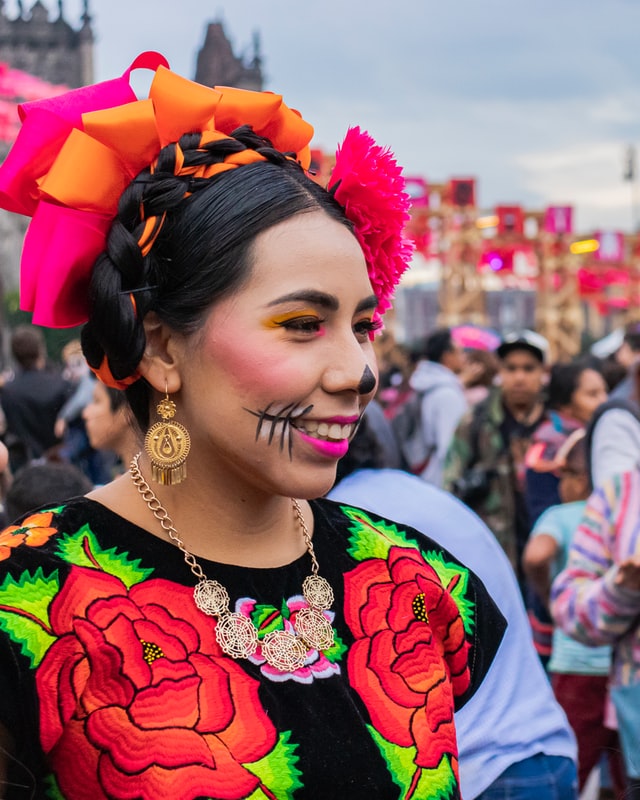
Easter in Mexico, known as the Mexican Holy Week or Semana Santa is a busy period when many businesses close and families travel to gather with each other – meaning crowded or fully booked hotels and restaurants. If you plan to travel during Easter make sure you book well ahead.
The Day of the Dead (Dia de Muertos) celebrations, held in late October/early November, is another popular time to visit Mexico City, although accommodation can get more expensive and booked up early. Mexico City celebrates Dia de Muertos a little differently from the rest of the country so check out this local’s guide to Day of the Dead in Mexico City for everything you need to know.
If you are just passing through Mexico City for a few days, I’d also recommend avoiding Three Kings Day in early January as prices can rise dramatically, and some shops and museums may be closed for the holiday too.
How to get to Mexico City
Getting to Mexico City is easy with many air, train and road connections. The city’s main airport, Mexico City International Airport (MEX), also known as Benito Juarez International Airport, is the busiest airport in Latin America and served by around 30 domestic and international airlines.
Mexico City airport is not too far from the city center. It only takes about 30 minutes by taxi or airport transfer while the metro takes 45-50 minutes.
If you need to spend the night close by, the Camino Real Aeropuerto is the best place to stay near Mexico City’s airport – it’s connected to the airport by a footbridge and has great value luxurious rooms, pool, fitness center and spa to help you refresh after or before a flight.

How to get around Mexico City
Mexico City is built on a grid system, which makes navigating simple, and there are many ways to get around. There are metro stations in most neighbourhoods, plus, you can get around via buses, bicycles, taxis and on foot.
Mexico City’s metro is a very popular mode of transport for the locals with around 200 stations and 12 different lines. It’s cheap to buy metro tickets compared to other forms of transport, making it a budget friendly way to explore the city. The services operate from early morning until midnight, however, try to avoid rush hour or rainy days as when the metro is busier, there’s a higher chance of pickpocketing.
In addition to metro services, you’ll also find buses and peseros (microbuses) operating throughout the city. They stop almost anywhere, in any neighbourhood, and some routes to popular tourist hotel areas (such as Paseo de Reforma) operate all night, however they do not have the best reputation for safety.
To use public transport in Mexico City you’ll need to get a Tarjeta de Movilidad Integrada (TMI), a rechargeable card available at any metro station or bus terminal. The card costs just 10 pesos, and you can top it up with any amount. A single ride on the metro or bus is a mere 5 pesos, and you can transfer between buses and metro lines for free, making it an incredibly cost-effective way to explore the city.
However, you do need to be vigilant when using public transport and keep an eye on your belongings, some of my friends had their phones pickpocketed on the bus. The metro is generally faster, more efficient and safer than buses but I’d still recommend avoiding traveling during peak hours (7-9 am and 5-7 pm) when the metro and buses can be very crowded and at night, especially if you are a solo female traveller.

If you’d prefer to explore the city on two wheels, bicycles are free to rent from kiosks next to Metropolitan Cathedral in the Historic Centre and at various locations throughout La Condesa, Paseo de la Reforma and Roma. However, it’s better to stick to quieter lanes and routes, as the main city roads can be busy and erratic during peak times.
Taxis are available but I preferred using apps like Uber because it’s safer, more convenient and more affordable, although traffic congestion means traveling across the city can take time – so factor that in when you’re planning your itinerary. I wouldn’t recommend renting a car in Mexico City due to the heavy traffic and the stress of navigating a big new city in a foreign language and finding safe places to park.
You need to be cautious when using public transport so if you want to do a lot of sightseeing the easiest and safest way is to book guided tours through trusted international platforms like Viator and Get Your Guide where you can check reviews from previous travellers. When you take a tour you have your transport covered as well as a knowledgeable local guide to show you around so it feels super safe and stress free.
Another convenient way to see all the tourist attractions is on the popular Hop On Hop Off Bus where you cruise the city streets at a slow pace, with audio commentary on your surroundings, from the comfort of an open-top double decker London-style coach.
Food and drink in Mexico City
Mexico City has amazing food with thousands of restaurants, cafes, eateries and food stalls to suit every taste and budget. As well as incredible traditional Mexican food you’ll also find plenty of international options and modern fusion restaurants, and don’t worry most places can tone down the spice level if needed.
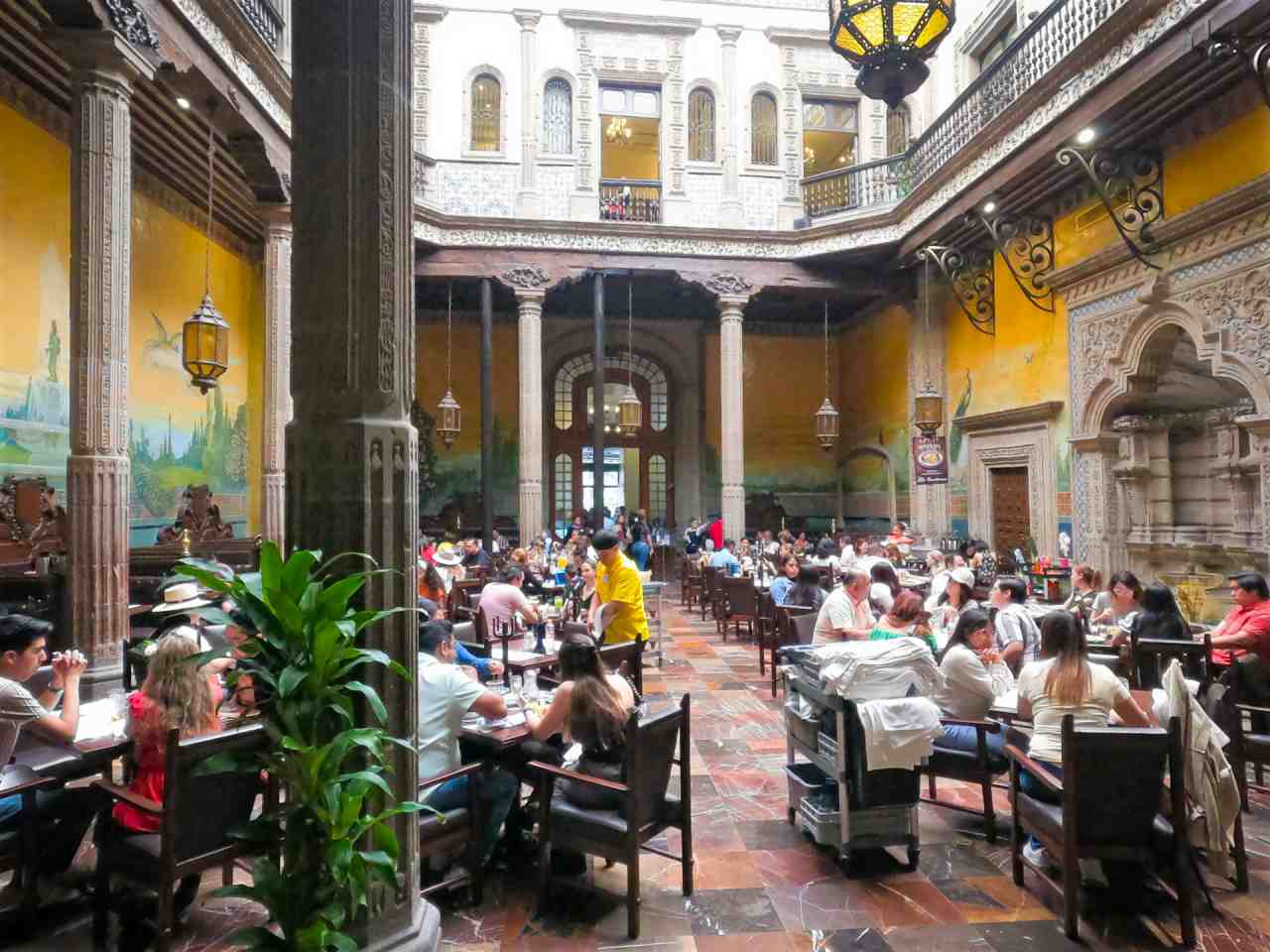
Best restaurants in Mexico City
Mexico City boasts some of the best restaurants in the Americas. Here are a few you shouldn’t miss:
- Pujol: A Michelin-starred restaurant that offers a modern take on Mexican cuisine. Every dish is a work of art.
- Quintonil: Innovative contemporary Mexican cuisine with a focus on seasonal ingredients.
- Rosetta: Set in a beautiful colonial building, offering a mix of Italian and Mexican flavors.
- Maximo: Really good brunch restaurant that sources its ingredients from local suppliers.
- Taqueria Orinoco: The tacos al pastor here are legendary. Perfect Mexican street food.
Best cafes in Mexico City
Mexico City also has an amazing cafe scene. Here are some of the best I’ve found:
- Cafebre El Pendulo: These cozy bookstore cafes can be found across the city and are the perfect spot to relax with a cup of coffee and a good book.
- Ficelle: A French patisserie that offers a gourmet selection of pastries and breads along with rich roasted coffees.
- Clemont: Rightfully popular ice cream parlor next to Parque México in the Hipódromo area.

Safety tips for visiting Mexico City
Many people worry, is Mexico City safe? Well, like any large city, there are safe areas and not so safe areas. If you stick to safe neighborhoods, do some research into spotting scams, stay alert and look after your belongings and practice common sense, you’re unlikely to run into trouble.
General safety tips
It is best to stick to well-traveled areas when exploring Mexico City. The historic center, Roma, Condesa, Polanco, Coyoacán, and San Ángel are generally safe for tourists. However it is important to be cautious in less touristy areas, especially at night.
Keeping your valuables secure is essential, as pickpocketing can occur in crowded areas such as markets, public transport, and busy streets. Using a crossbody bag with a zipper can help keep your belongings safe. It is also a good idea to avoid wearing flashy jewelry.
When withdrawing money, it’s best to use ATMs located inside banks or shopping malls rather than those on the street.
Learning some basic Spanish phrases can also be really helpful. Many people in tourist areas speak some English, but knowing simple Spanish expressions will make communication easier, and can be a lifesaver in emergencies.
Make sure your mobile phone works and can make outgoing calls. Being able to call for help if you run into trouble really puts your mind at ease. You can easily buy an eSim or a tourist SIM card in Mexico City to avoid roaming fees – just make sure your phone is unlocked.

Getting around safely
The safest way to get around Mexico City is by using ride hailing apps like Uber and Didi. These apps operate a rating system for drivers and allow you to pick from the available rides beforehand. While it’s not foolproof, it adds a layer of accountability that prevents the majority of scams and ripoffs.
When using taxis, always choose official services. It is best to avoid hailing street taxis in the street as there have been reports of scams and overcharging. If you need a taxi from the airport, you should use the official taxi stands.
If you’re taking public transport, be especially alert. The metro is generally safe during the day but can become very crowded. It’s best to avoid public transport during rush hour and to keep a close eye on your belongings. If you’re a woman, use the women-only metro cars, especially if traveling alone at night.
Whenever you’re walking in Mexico City, it is important to pay attention to the traffic. Many drivers don’t stop for pedestrians at crosswalks, so always look both ways and proceed cautiously when crossing the street. I wouldn’t recommend walking alone late at night either.
Food and drink safety
Trying the street food is an essential part of the Mexico City experience, but it is best to choose vendors with a high turnover of customers to ensure freshness and safety. If you are unsure about hygiene, either join a street food tour or opt for a restaurant or coffee shop instead of a street stall.
It is also important to avoid drinking tap water, as it is not safe for consumption. Even locals do not drink from the tap. Always choose bottled or filtered water instead.
When drinking alcohol, be aware that some bars serve very large measures. It is a good idea to pace yourself and always keep an eye on your drink. Never leave your drink unattended, especially in crowded places.

Scams and common problems
Anywhere in the world that has a large number of tourists is going to have scammers and pickpockets, and Mexico City is no different. Tourists are often the targets as they are perceived as being wealthy, regardless of their personal circumstances.
Here’s a few things to watch out for:
Unofficial taxi’s might use altered meters, take longer routes, or take you to unintended destinations. To avoid falling victim, only book transport and tours through reputable companies or through your hotel.
Some scammers pose as police officers and may ask for your passport or money. If someone claiming to be an officer approaches you in this manner, politely refuse and insist on going to the nearest police station to verify their request.
In busy areas, be cautious of distractions. Some scammers will attempt to divert your attention by spilling something on you or engaging in unnecessary conversation while an accomplice steals your belongings. If something seems suspicious, it is best to walk away immediately.
In case of an emergency, the general emergency number in Mexico City is 911. Tourists can also seek assistance from the tourist police (Policía Turística), who wear green uniforms and speak English.

Enjoy Your Trip to Mexico City!
So that’s it for my Mexico City itinerary – I hope you’ve found it useful. There are so many interesting things to do in Mexico City and if you’re into history, art and food, you’ll probably fall in love with this captivating and endlessly fascinating city too!
You can adjust my itinerary depending on your interests, budget and how much time you have to spend, but if you want to see all the highlights then I really recommend spending at least 4 days in Mexico City. With 4 days you can explore the Centro Historico, Chapultepec Park, Coyocan, Xochimilco and Teotihuacan.
Don’t miss the Anthropology Museum and the Frida Khalo Museum and allow some time to explore the diverse neighbourhoods with their lovely parks, markets, cafes, restaurants and bars. Make sure you eat as much amazing Mexican food as you can and, if you have more time, explore beyond the city.
I hope this blog has inspired you to explore more of the Mexican capital and that you love it as much as I do!
¡Feliz viaje!
Where Next?
If you’re visiting Mexico City as part of a longer trip like I did then you might find my other Mexico blogs useful – especially if you’d like to explore the more off the beaten track beaches of Oaxaca.
You might like:

